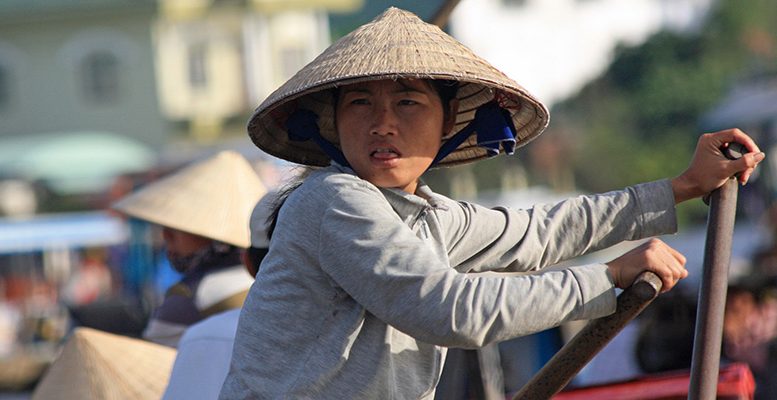Crédito y Caución (Atradius) | The economy grew 7% in 2019, as a surge in exports to the US offset weaker demand from China. Private consumption and fixed investment also performed well, helped by rapid wage growth, rising tourism and export manufacturing. However, in 2020 the economic performance is severely impacted by the coronavirus pandemic, with GDP growth expected to slow down to 2.3%. Both domestic demand and exports are impacted, with tourism, transport (aviation), electronics, textiles, and agriculture being the most affected industries.
In early 2020 manufacturers with supply chains dependent on China suffered from disruptions. Vietnam’s supply chains are closely tied to its Northern neighbour, with more than 40% of core intermediate goods used as inputs to produce Vietnamese goods coming from China (textile manufacturers even source 60% of garment imports from China). Agriculture has been affected since China is the largest export market for Vietnamese agriculture, forestry and seafood products. Due to the global economic slowdown and the sharp economic deterioration in the US, China and Japan (Vietnam ́s main trading partners), exports are forecast to contract 5% in 2020 after robust annual growth rates 2019 and 2018. Investments are also forecast to contract, while private consumption growth is expected to slow down to about 4% (up 7.3% in 2019). The Central Bank has lowered the benchmark interest rate to 4.5% in order to support banks and to facilitate loans. Additionally the government has launched large stimulus packages to support businesses and consumers. Public debt is still high (53% of GDP in 2019), and the fiscal deficit is expected to increase substantially in 2020, by more than 5%. Rising public debt increases the risk of debt distress and limits fiscal space.
Vietnam’s foreign debt structure is stable (long maturities and financed by public creditors over the past couple of years) and expected to decrease further in the coming years. Foreign exchange reserves are increasing and sufficient to cover external financing requirements. After remaining more or less stable in 2019, the dong exchange rate against the USD has come under higher pressure in 2020, due to the increased external and internal headwinds.
Severe downside risks remain
A deeper global economic recession than currently expected triggered by the coronavirus pandemic poses a major downside risk for Vietnam ́s economic performance. As the open economy is heavily dependent on external trade, this could have significant knock-on effects. Additionally, rising protectionism (e.g. another escalation of the Sino-US trade war and potential US protectionist measures against Vietnam itself could hurt the economy.
Good prospects in the medium-and long-term
Vietnam is the main low-cost regional alternative to China for export-orientated manufacturing. The shift of export manufacturing from China to Vietnam already took off before the Sino-US trade war, due to Vietnam’s relatively low production costs, especially in the ready-made garments (RMG) sector. This trend accelerated in 2019 as the country benefited from trade diversification triggered by the trade conflict. Besides textile production, the manufacturing of consumer goods and ICT products are increasingly shifting from China to Vietnam. Additionally, the trend to move production away from China could be accelerated by the coronavirus-related supply chain disruptions that affected many companies around the world. Supporting factors besides lower production costs are the fact that Vietnam is already part of several value chains, has a strong road, rail and port infrastructure and participates in several free-trade agreements (the most recent one with the EU will probably come into force in summer 2020). Strong investment promotion and the existence of special economic zones make Vietnam attractive for companies looking to start new production sites or to expand existing ones. This should lead to robust investments and exports in the coming years.
Some structural weaknesses remain
Despite increasing opportunities for exporters and investors, the Vietnamese business environment and investment climate is still hampered by red tape, weak institutions, infrastructure issues and corruption. In spite of some improvements, the banking sector remains weak.
Political Situation
Economic reforms not followed by political changes
The Vietnamese Communist Party remains firmly in power, despite rising public discontent over the lack of personal freedom, government corruption and land seizures by the administration. While the leadership has tightened its grip on the civil society, economic reforms continue.
The territorial dispute with China over conflicting claims in the South China Sea is currently not high on the agenda, but remains a serious issue in the bilateral relationship for the future. In order to counter growing Chinese assertiveness, Vietnam is keen to improve its political and security cooperation with the US and Japan. However, despite enhancing its naval forces, Vietnam lacks the military capability to pose a serious challenge to any Chinese actions. At the same time, China is an important and powerful trade partner, and Vietnam ́s manufacturing sector depends heavily on raw materials imported from China.
Moreover, given the ideological similarities of the regimes in both countries, there is still a strong pro-China faction within Vietnam’s Communist Party





